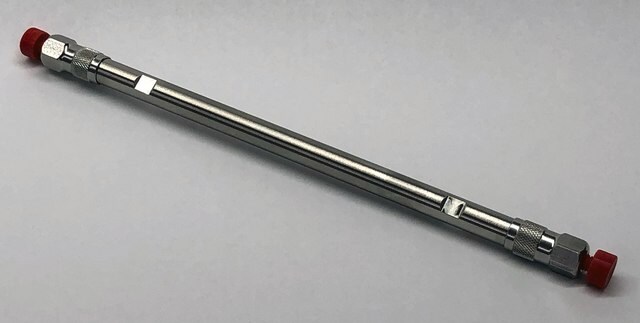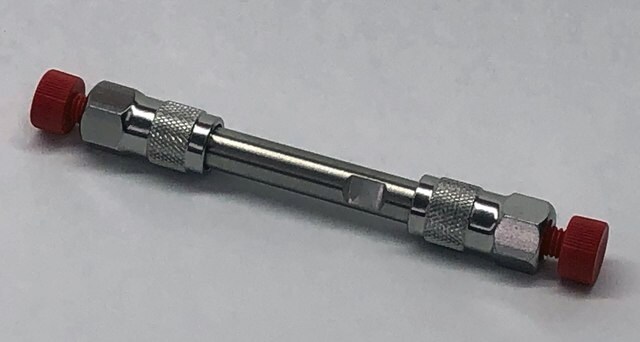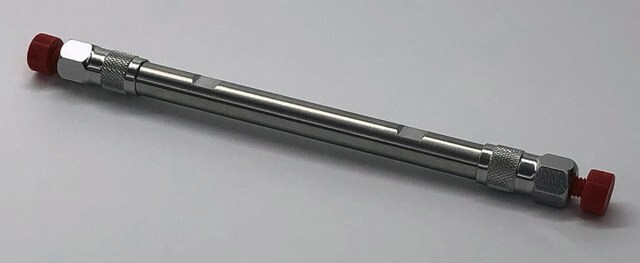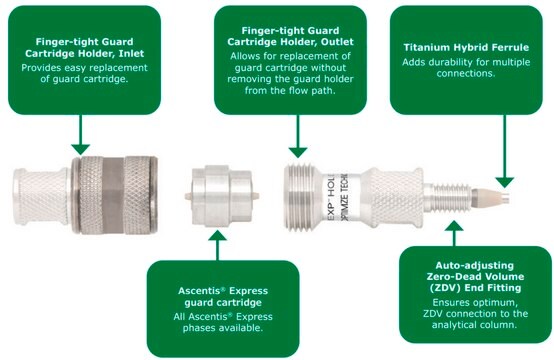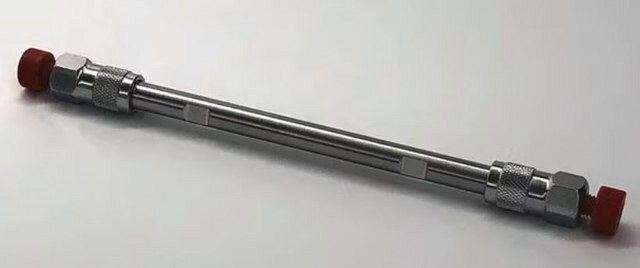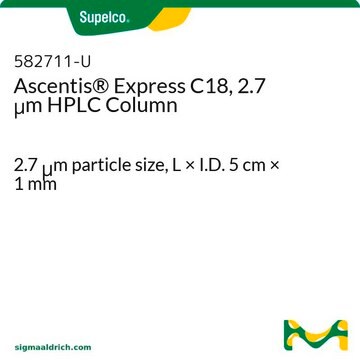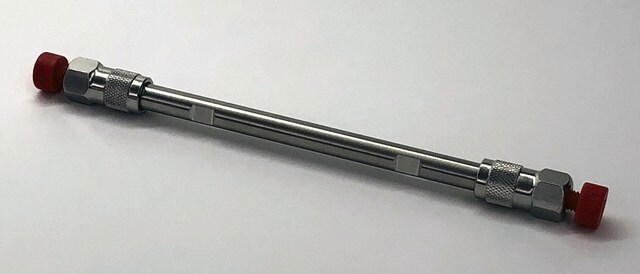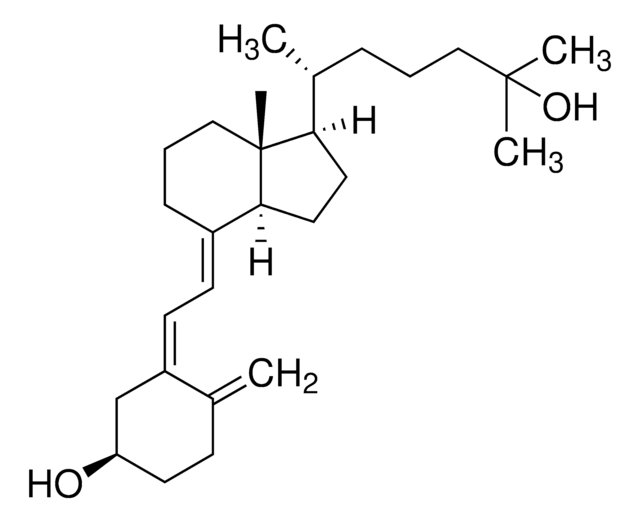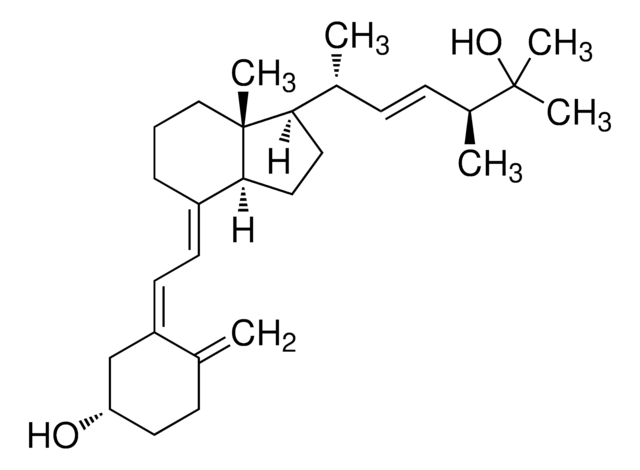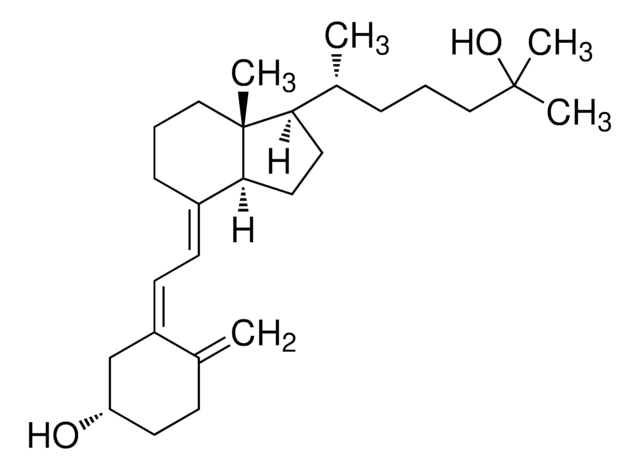53569-U
Ascentis® Express 90 Å F5 (2.7 μm) HPLC Columns
L × I.D. 10 cm × 2.1 mm, HPLC Column
Synonym(s):
Core-shell (SPP) Fused Core PFP HPLC column
About This Item
Recommended Products
product name
Ascentis® Express F5, 2.7 μm HPLC Column, 2.7 μm particle size, L × I.D. 10 cm × 2.1 mm
material
stainless steel column
Agency
suitable for ISO 21675 2019
suitable for USP L43
product line
Ascentis®
feature
endcapped
manufacturer/tradename
Ascentis®
packaging
1 ea of
parameter
60 °C temp. range
600 bar max. pressure (9000 psi)
technique(s)
HPLC: suitable
LC/MS: suitable
UHPLC-MS: suitable
UHPLC: suitable
L × I.D.
10 cm × 2.1 mm
surface area
135 m2/g
impurities
<5 ppm metals
matrix
Fused-Core particle platform
superficially porous particle
matrix active group
PFP (pentafluorophenyl) phase
particle size
2.7 μm
pore size
90 Å pore size
operating pH
2-8
application(s)
food and beverages
separation technique
reversed phase
Looking for similar products? Visit Product Comparison Guide
General description
Application
- Interference of Preservatives on Urinary Iodine Measurement by Sandell-Kolthoff Method.: This research examines the impact of preservatives, including hydrochloric acid, on the accuracy of urinary iodine measurements. The study highlights the need for careful selection of preservatives to avoid analytical interference (Kaya et al., 2022).
- Monitoring the Extraction of Copper from Chicken Dung Leachate Using an Aluminium Electrode as an Indicator.: The study explores the use of hydrochloric acid in the leaching process of copper from chicken dung. It demonstrates the effectiveness of hydrochloric acid in extracting metals from organic waste materials (Kugeria et al., 2019).
- Development of an Analytical Method for Urocanic Acid Isomers in Fish Based on Reactive Extraction Cleanup and Chaotropic Chromatography Techniques.: This paper details a method using hydrochloric acid for the extraction and analysis of urocanic acid isomers in fish. The method enhances the detection and quantification of these compounds in biological samples (Zhong et al., 2018).
- Determination of Single-Ion Activities of H+ and Cl- in Aqueous Hydrochloric Acid Solutions by Use of an Ionic Liquid Salt Bridge.: The research provides a novel approach to determining the activities of hydrogen and chloride ions in hydrochloric acid solutions using an ionic liquid salt bridge, contributing to the understanding of ion behavior in aqueous solutions (Sakaida et al., 2011).
Legal Information
Application
guard cartridge
related product
required but not provided
Storage Class Code
11 - Combustible Solids
WGK
WGK 3
Flash Point(F)
Not applicable
Flash Point(C)
Not applicable
Choose from one of the most recent versions:
Certificates of Analysis (COA)
Don't see the Right Version?
If you require a particular version, you can look up a specific certificate by the Lot or Batch number.
Already Own This Product?
Find documentation for the products that you have recently purchased in the Document Library.
Customers Also Viewed
Articles
A significantly improved HPLC-fluorescence method for DMB-NANA and -NGNA, and application of this method to compare 2 candidate biosimilar therapeutic proteins to their respective RMs.
This Sigma-Aldrich article continues to detail new methodology for the analysis of Vitamin D metabolites using HybridSPE-Phospholipid technology.
Improvement in LC/MS Analysis of Vitamin D Metabolites in Serum by Leveraging Column Selectivity and Effective Sample Prep
Enhanced selectivity for stereoisomers and closely related compounds with alternate selectivity from C18 phases for basic, acidic, or neutral compounds
Protocols
Learn more about LC/MS/MS Analysis using on-line cartridges for the removal of phospholipids from protein precipitated biological fluid samples
LC/MS Analysis of Opioid Glucuronide Metabolites in Urine on Ascentis® Express F5 after Solid Phase Extraction (SPE) using Supel™-Select HLB
Fast and Accurate LC-MS Analysis of Vitamin D Metabolites, Using Ascentis® Express F5 HPLC Columns from Supelco®
Chromatograms
application for HPLCapplication for HPLC, application for SPEapplication for HPLCapplication for HPLCShow MoreOur team of scientists has experience in all areas of research including Life Science, Material Science, Chemical Synthesis, Chromatography, Analytical and many others.
Contact Technical Service